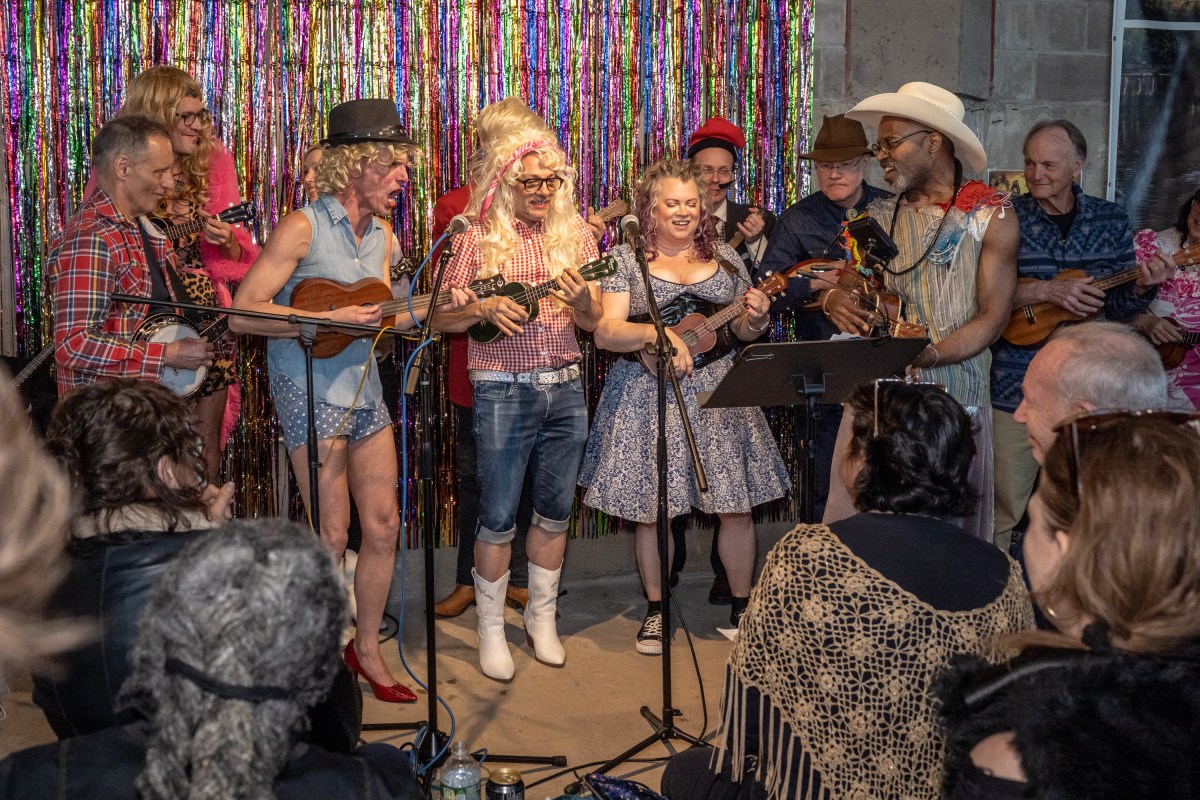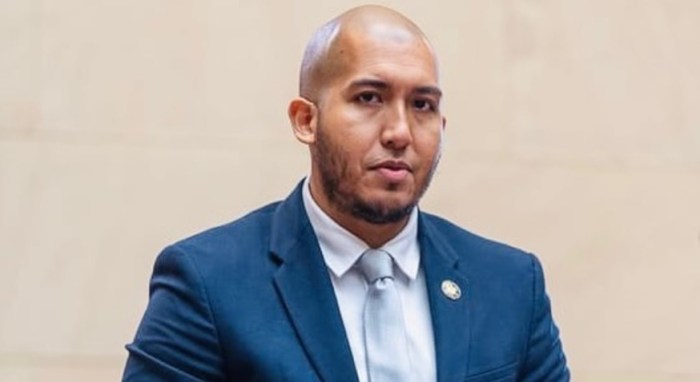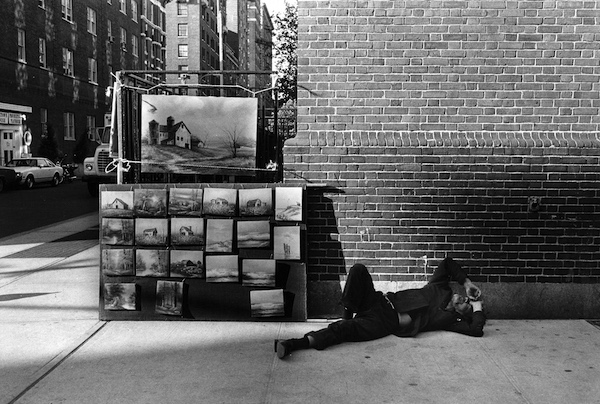
BY NORMAN BORDEN | It would be hard to make a long story short out of Jill Freedman’s 40-plus-year career — but that’s exactly what the Steven Kasher Gallery has accomplished with “Long Stories Short,” their new exhibit of some of the photographer’s best work.
While it’s her first exhibition at this gallery, the more important first is that 35 of the 44 vintage black-and-white images in the show have never been exhibited before.
This unpublished work, which encompasses the period from 1967 to 1995, may help the photography world rediscover Freedman, and give her the chance to gain the recognition she deserves. (Photography critic A.D. Coleman called Freedman “one of the great unsung documentary photographers of her generation.”)
When asked how the exhibition came about, Anais Feyeux, the gallery’s director and the show’s curator, explains, “I did not want to reproduce work that had been in her other New York shows, so when Jill opened her archives for me, I was interested in her series about Holocaust survivors, and her work shot on London and New York streets.”
Freedman says, “It was interesting for me to see my work through the curator’s eyes…I’m sick of seeing the same stuff over and over. I have tons of pictures from New York in the ’60s, ’70s and ’80s that have never been seen.”
In fact, Freedman is now trying to get them published in her eighth book, which is tentatively titled “Madhattan.” Illustrating that madness is one picture called “Naked City” on the last page of the book — in 1979, she photographed the back of a completely naked man going through the revolving door of the Hilton on Sixth Avenue.
Quite simply, it’s an in-your-face picture that I’d expect to become recognized as a classic New York street photograph now that it’s out of the archive and in the public eye. Freedman paraphrases a line from the 1960s TV show, “Naked City” — “There are eight million stories in the naked city, and that was one of them.”
Exactly.
Back in the day (the ’60s and ’70s), Freedman honed her reputation as a quintessential New York documentary and street photographer, book by book. She had seven books published as the result of her self-assigned projects, and the exhibition includes one image from each of the seven, plus one from “Madhattan.”
No doubt her feisty, irrepressible, irreverent and fearless personality — combined with her photographic talents — helped her go where few photographers (particularly female ones) had gone before.
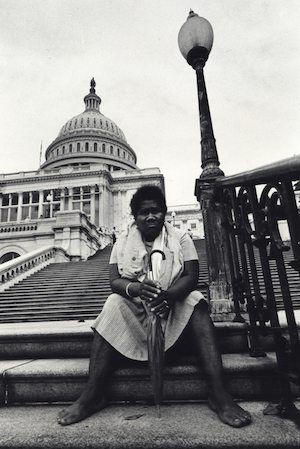
For example, when she covered the 1968 Poor People’s Campaign in Washington D.C., she lived among the protestors of Resurrection City. Her photographs opened doors for her and led to her first book, “Old News: Resurrection City,” which was published in 1971.
For “Firehouse,” Freedman spent a year following NYC firemen in Harlem and the Bronx, living in their firehouses for days at a time, and sleeping in the chief’s car. In those days, women weren’t allowed in the firehouse past 10 p.m.
She followed the success of “Firehouse” with her book “Street Cops,” in which the photographer talked her way into being allowed to accompany cops on patrol in the pre-gentrified days of the Lower East Side and Times Square.
Freedman says, “There were already lots of stories about bad cops. I wanted to do a book about good cops and show what the job was really like.” Her pictures captured the human side of her subjects.
In “Circus Days,” she borrowed a van and traveled with the Clyde Beatty-Cole Brothers circus on the East Coast for two months, documenting the strange, hardscrabble life of circus performers and clowns, and the claustrophobia of the animals. Here, as in much of her work, many of her pictures show a connection between subject and photographer.
“I’m a photographer, but I’m also a storyteller,” Freeman notes. “Some interesting stuff is going on in many of the pictures and each one tells a long story, but it takes place in the fraction of a second.” Thus the title, “Long Stories Short.”
The story is quite evident in her 1979 image, “Surf ’n Turf.” Here, Freedman has captured the irony of an apparently homeless man sleeping on a Manhattan sidewalk next to a vendor’s display of paintings depicting crashing ocean surf and quiet country landscapes.
Dream on.
There’s also a story — actually two stories — behind the 1967 image, “Christ Loved Men Only,” which she took in London. Four middle-aged women are walking past a door with graffiti scrawled on it that reads, “Christ Loved Men Only.”
Huh?
One woman is enjoying an ice cream cone, and another is staring at the camera, while the other two seem unaware of anything out of the ordinary.
There’s a lot going on in this picture, with the juxtaposition of the words and women creating a delightful, subtle irony. The other story is that John Szarkowski, the legendary photography director at MoMA, bought the picture for the museum’s collection. Freedman says, “I refused to donate it so they bought it, but I didn’t get a fortune for it. I was just starting out.”
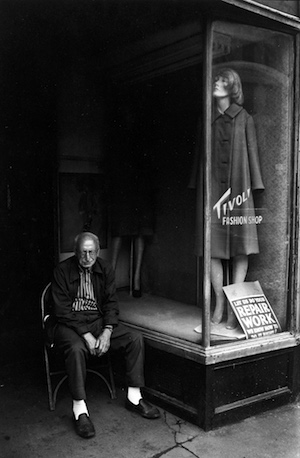
The story in the 1973 image “Tivoli Fashion Shop” jumps at the viewer. Freedman captures a man’s dejected look and slump-shouldered body language, a sharp contrast to the snooty attitude of the mannequin in the window, whose coat doesn’t seem all that fashionable. The dark rich tones of Freedman’s gelatin silver print adds to the strength of this picture.
One of the published images is “Poor People’s Campaign,” which was used for the cover of her first book, “Old News: Resurrection City.” The low angle from which the picture was taken serves to emphasize the woman’s bare, flat feet, and the US Capitol in the background.
Jill Freedman has been back in New York for about 10 years, having left the city she loved in the 1990s for medical and financial reasons. When she returned, she was shocked by all the changes. She missed the sleaziness of Times Square and bemoaned all the gentrification.
Still voicing her opinions at age 75 in her own inimitable way, Freedman’s story is happily getting longer and her photographs, old and new, continue to speak for themselves.
“Jill Freedman: Long Stories Short” is on display through Oct. 24 at the Steven Kasher Gallery (515 W. 26th St. btw. 10th & 11th Aves.), Tues.–Sat., 10 a.m.–6 p.m. Visit stevenkasher.com. Artist info at jillfreedman.com.












